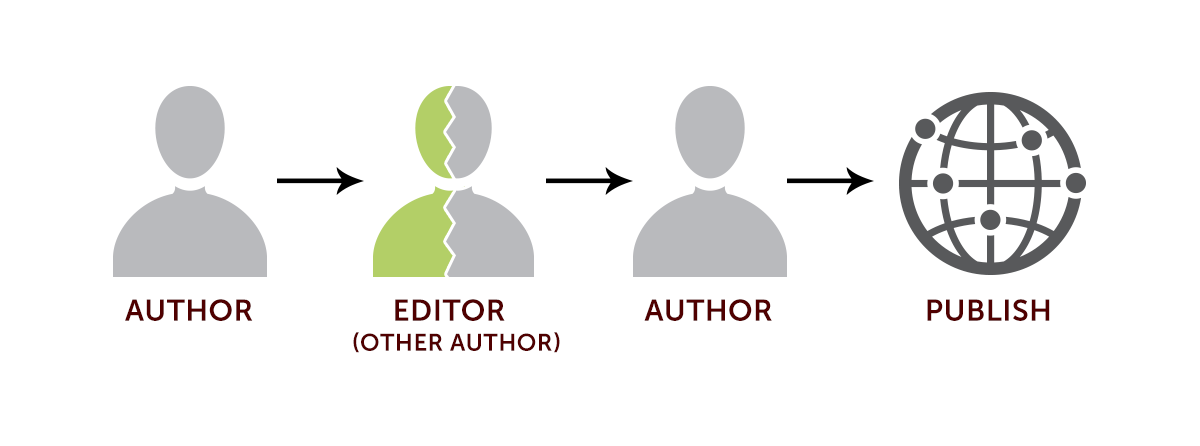Overview & Priorities
Our goal in content creation is to promote consistency, not conformity.
Content Types
- Basic Pages
- Blog Posts
- Case Studies
- Tutorial Videos - Channel your inner robot.
- eBooks
Taxonomy
The sole goal in our taxonomy strategy is to help our visitors find the content they want. All decisions should be made to keep visitors engaged with our website.
Categories
Our blog categories are listed below. We'll review this vocabulary in our yearly content audit to make sure that the terms are still representative of our content.
Tags
The Creative Technical Director will prune the Tag vocabulary at the end of every month to eliminate overlap and improve consistency.
Editorial Guide
We know that chunking is a useful way to help people scan, understand, and retain information, so let's keep that in mind when we're creating content. Use short words, short sentences, short paragraphs, and bulleted lists as much as possible to make content easy to digest.
EDUCO
When referring to our company in text, capitalize and bold EDUCO.
Voice and Tone
We're writing for individuals, not entities, so be conversational, open, and specific. Use the active voice not the passive voice. Think, "Cool people build websites", not "Websites are built by cool people."
Voice Chart
| Voice Characteristics | Description | Do’s | Dont’s |
|---|---|---|---|
POV & Pronouns
Speak directly to our audience using the second person 'you' and 'your'... most of the time. The exception to that very loose rule is when we're discussing characteristics or behaviors that could be perceived as negative or less than ideal. 'You' don't have a problem managing resources, 'we' have a problem managing resources, or 'business owners often' have a problem managing resources. Don't be afraid to share blame.
In the event that it's necessary to speak in the third-person, keep things gender-nuetral with 'they', 'them', 'their', etc.
Punctuation
Oxford comma – use it. Other than that, defer to The Yahoo! Style Guide (should be in the library unless someone snagged it) to answer punctuation questions.
Style Guide
Before you hop into content and publishing, make sure you're comfortable using the WYSIWYG Editor
Headings
Headings and subheadings break up content and make it easier for our visitors to scan the page. When they're clear, meaningful, and keyword-rich, headings also improve our SEO which makes Marty very happy.
H1 - Haha! Nope!
Don't use the H1 in your body copy under any circumstances. You might notice that it's not even available as an option in the text style dropdown — that's how serious we are about not using it.
H2 - Let's start segmenting some content!
The large size and bright red of the H2 says "Look at me! I'm important!", so be sure to make your words count.
H3 - Now we're cooking!
Hierarchy is important when you're using headings. Before you start throwing down H3's, make sure you have at least one H2. Think term paper outline.
H4 - Look Ma! I'm Gray!
The lighter gray of the H4 helps to differentiate it from the H3.
H5 - Pump the brakes, buddy!
If you've found yourself breaking things down to the H5 level, double check that your content hasn't gotten too complicated.
H6 - Now we're just being ridiculous!
You probably won't ever see this bad boy in the wild.
Images
Or goal is to only use images when they provide useful additional context or information, but sometimes you just need something to break up the content, and that's okay too.
Custom Graphic/Illustration > Screenshots > Representative Stock Photo > Conceptual Stock Photo

- For the featured image that will be used in the header position, a 2:1 ratio is the best, preferable 1200px X 600px
- For a featured image that will be used inline with the copy, a 4:3 ratio is best.
- 640px X 480px is the minimum and 1200px X 1200px is the max.
- All images will be resized for thumbnails, so mind the crop.
Tables
Tables are great when we've got a lot of data to share, but keep in mind that these bad boys are not responsive. The default WYSIWYG table has no style applied, but you can sex things up with the 'sexytable' class.
| Flowers | Colors | Qty |
|---|---|---|
| Roses | Red | 5 |
| Violets | Blue | 2 |
Lists
Lists help our visitors identify and scan important points. These options are pretty self explanatory, but have some 'splainin' anyway. We're not sticklers on the use of full sentences and periods for bullet points, just keep it consistent. Either all items in a particular list are fragments with no punctuation, or they're all full sentences.
Ordered List
If there's some numerical rhyme or reason such as ordered steps or ranking, use an ordered list.
- Step one
- Step two
- Step three
Description List (the artist formerly known as the Definition List)
If you've got a list of terms and descriptions, this is your format. You get the readability of a simple two-column table, but it's responsive.
- Term
- Definition
- Term
- Definition
- Term
- Definition
Unordered List
If your list doesn't fit the criteria for an ordered list or a definition list, use our friendly neighborhood catch-all, the unordered list.
- Here's a cool point.
- Oh wait, there goes another cool point.
- Man, I'm on a roll with cool point number three!
Apply the 'custom' style to your list and things get interesting...
- Here's a cool point.
- Oh wait, there goes another cool point.
- Man, I'm on a roll with cool point number three!
Roles & Responsibilities
We have a small team, so an understanding of our responsibilities in the content development process is important.
Review Process
Even though we don't have the Editor or Content Manager role for approval and publishing, we still have to make sure our content is reviewed before it goes live.
All content should be reviewed by at least 2 team members before publishing.
